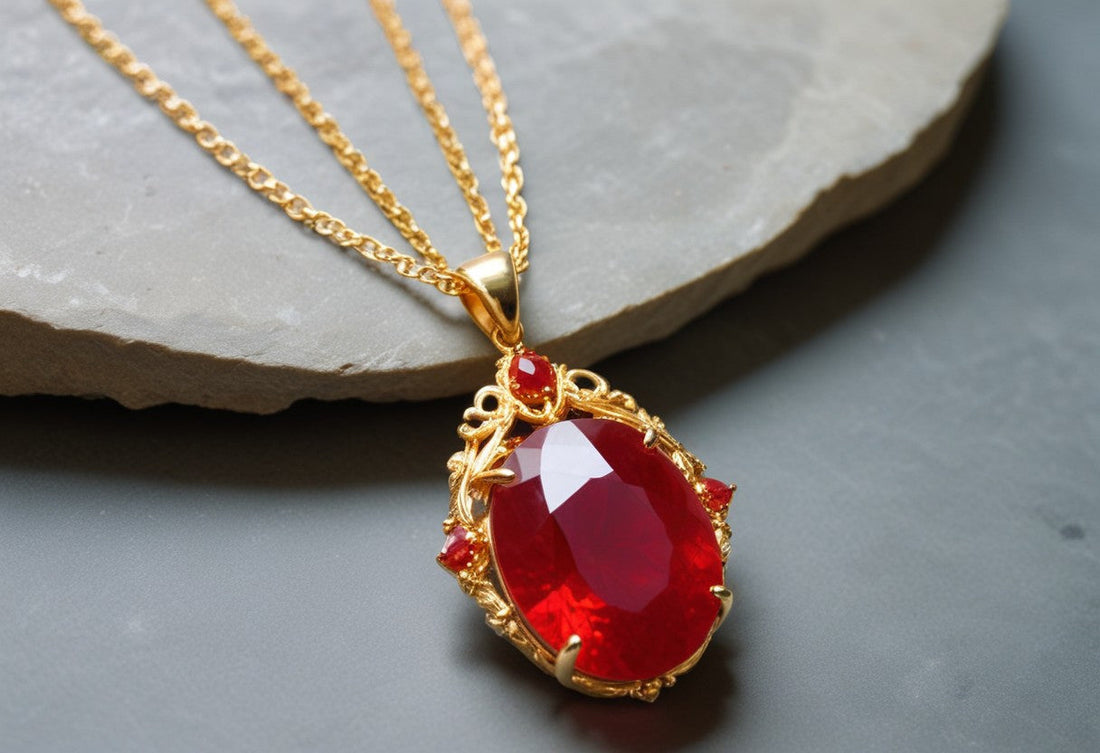How to Identify a Real Ruby

How to Identify a Real Ruby Gemstone (Manik nag) at Home
Identifying a real Ruby (Manik) gemstone at home involves several methods that can help determine its authenticity. Here are some practical techniques:
1. Visual Inspection
- Color: Genuine Rubies exhibit a rich, vibrant red color, sometimes with a hint of blue or purple. The color should be evenly distributed without any zoning.
- Clarity: Natural Rubies often have inclusions but should not be overly cloudy. Look for a stone that is relatively clear with minimal inclusions.
- Luster: A real Ruby should have a high, glassy luster and should sparkle under light.
2. Touch and Temperature Test
- Cool to Touch: Real gemstones, including Rubies, are typically cool to the touch and take a while to warm up in your hand.
3. Density and Weight
- Heaviness: Rubies are dense stones. A real Ruby will feel heavier than a fake or glass imitation of the same size.

4. Hardness Test
- Scratch Test: Rubies rank 9 on the Mohs scale of hardness. Use a piece of glass or a steel knife (which are less hard) to try and scratch an inconspicuous part of the stone. A real Ruby should not scratch easily.
5. Transparency
- Light Test: Hold the stone up to a light source. A genuine Ruby should allow light to pass through, showing brilliance and sparkle. However, it should not be completely transparent like glass; there should be some resistance to light.
6. Magnification
- Inclusions: Use a magnifying glass or jeweler’s loupe to inspect the stone. Natural inclusions (such as tiny crystals, mineral deposits, or needle-like structures) are common in real Rubies. These inclusions should look natural and not like air bubbles (which are common in synthetic stones).
7. Fluorescence
- UV Light Test: Most natural Rubies will fluoresce under ultraviolet (UV) light, typically glowing a bright red. Shine a UV light on the stone in a dark room to check for this effect.
8. Refractive Index Test
- Penlight Test: Shine a small penlight through the gemstone. Look for a double image of the back facets when viewed from the top. This indicates a high refractive index, a characteristic of rubies.
9. Heat Test
- Heat Resistance: Apply a moderate amount of heat to the stone using a lighter or match for a short time. Real rubies can withstand heat, but imitations like glass may crack or change color.

10. Water Test
- Immersion: Place the stone in water and observe any changes. Real Rubies retain their color underwater, whereas some imitations may appear less vibrant.
11. Bubble Test
- Look for Bubbles: Under magnification, check for bubbles inside the stone. Real Rubies should not have bubbles; their presence indicates a synthetic or glass imitation.
12. Consultation and Certification
- Expert Consultation: While home tests can provide some indications, the most reliable way to confirm the authenticity of a Ruby is by consulting a certified gemologist or getting the stone tested at a reputable gem lab.
- Certification: Always ask for a gemstone certificate from a recognized authority when purchasing a Ruby. This certificate verifies the authenticity and quality of the stone.
Final Thoughts
By performing these tests, you can gain confidence in the authenticity of your Ruby. However, for the most accurate results, seek professional evaluation and certification. This ensures that you have a genuine and high-quality gemstone.
Even better you can buy the stone from a reputable seller. You can buy high quality Ruby gemstone (Manik) at affordable prices from Vedic Crystals
---------
Also you can buy high quality gemstones of various ratti at affordable prices from Vedic Crystals
For more information about Vedic Crystals and our range of gemstones and rudraksha beads, visit Vedic Crystals website or contact us at contactus@vediccrystals.com/ +91-9811809967 (Whatsapp).
Also if you found this article useful , please share it with someone who might need it.
Moreover, in case you want a additional 5% discount coupon on our entire range of gemstones and Rudraksha : Please comment "Interested" below.


















